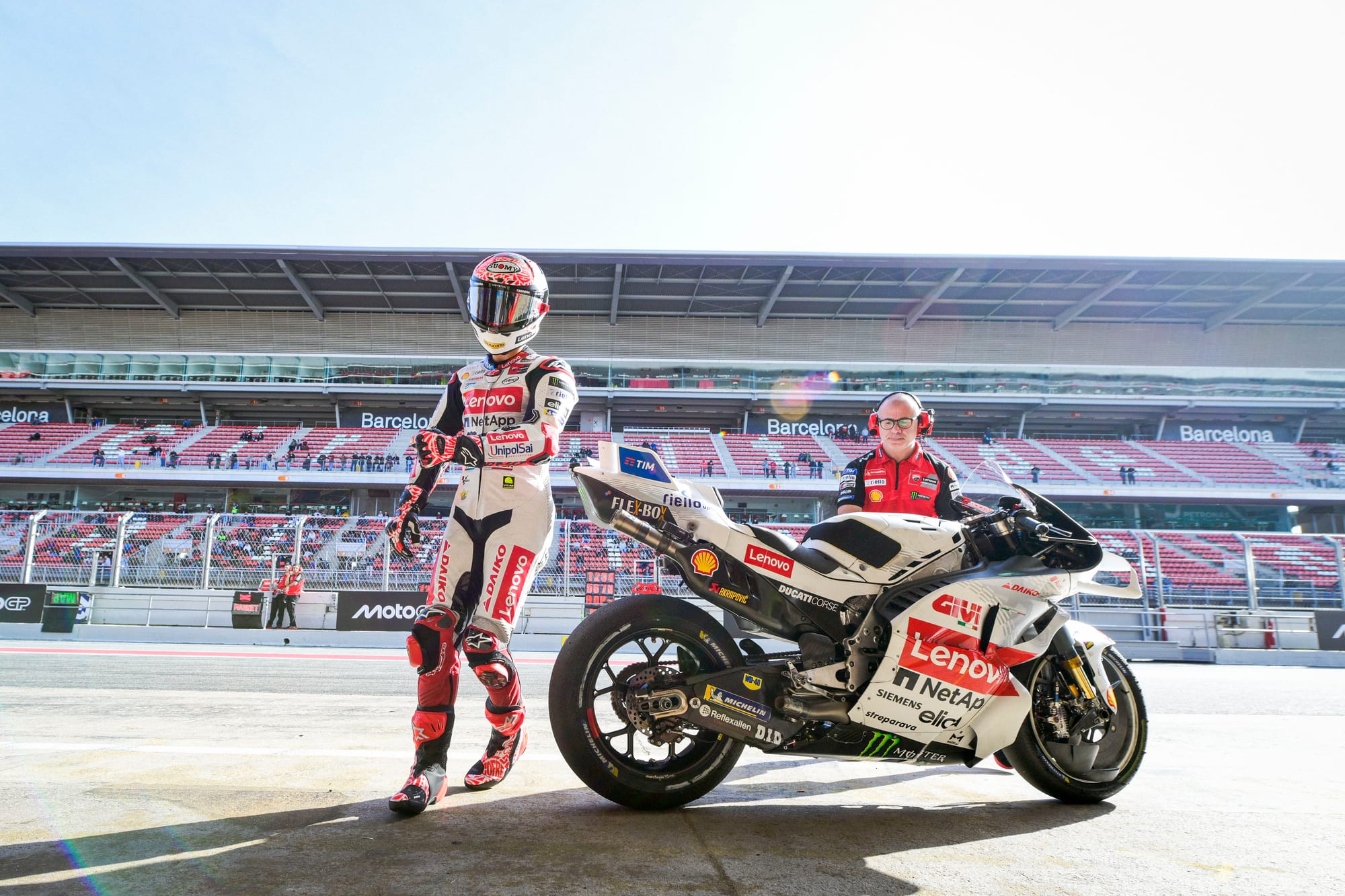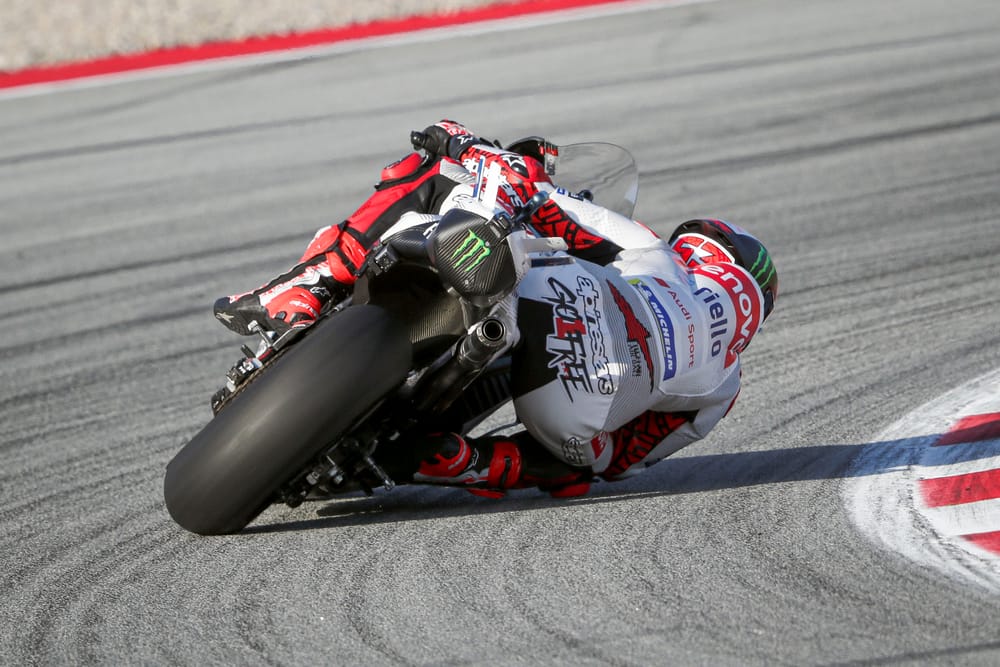MotoGP’s plan to introduce Formula 1 style pit-to-bike radio in 2025 faces opposition from outgoing world champion Pecco Bagnaia.
The system was tried again in Tuesday’s post-season Barcelona test, where Bagnaia insisted the current iteration is still too dangerous to use.
MotoGP has been experimenting with the technology since 2020, ostensibly to improve safety by allowing race control to communicate directly with riders in the case of an incident on track rather than to allow teams to talk to their racers.
Right now, that function is already accomplished by text messages that can be sent to the bike’s dash by both race control and the teams, either for safety issues such as red flags or to communicate information such as the gaps to rivals.
It’s a somewhat restricted system, especially in regard to what the teams can do, with messages coming from a pre-approved list that limits what can be communicated.
It’s widely believed that MotoGP bosses also see an entertainment value in being able to communicate with riders during a race, replicating the radio messages that F1 has successfully incorporated into its TV broadcasts.
And despite many in the paddock having reservations, MotoGP has been pushing on with tests of the technology for the past few seasons, experimenting with different forms of transmitter, speaker and microphone inside helmets.

As that testing increased across 2024, it’s believed the plan was to implement some sort of initial system for next season.
However, as far as factory Ducati rider Bagnaia is concerned, that plan needs to be delayed.
One of the primary concerns so far has been around racers being disturbed by radio messages, should they come while they are fully committed to a corner or at maximum lean angle, an issue exacerbated by the way in which the pack spreads out around the track during a race meaning there will be no ideal time to send a full-field message confident no one will be at lean or mid-corner.
“It’s still not ready,” Bagnaia insisted.
“It didn’t work when I tested it. It wasn’t working so I didn’t hear anything.
“Also it was disturbing me a bit.
“The cable to connect it is also huge and it could be dangerous.
“So, still not ready and I will test again when it is ready.”
With only five days of full-field pre-season testing between now and the opening race of 2025 in Thailand next March, Dorna has a race against time to find a solution to at least some of those concerns if it wants the radio technology to be part of next year’s championship.



